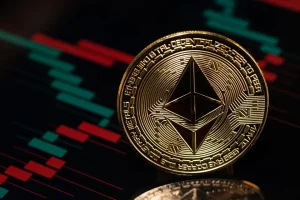Trading signals in the context of cryptocurrency refer to indicators that are used by traders to make decisions about buying or selling digital assets. These signals are generated based on various factors such as price movements, volume trends, technical analysis, and market sentiment.
Trading signals are created by analyzing historical data and applying technical indicators to identify opportunities for profitable trades. For example, a trading signal may indicate that a specific cryptocurrency is experiencing a bullish trend, suggesting that it may be a good time to buy and hold that asset in anticipation of price appreciation.
Traders can receive trading signals through various means, including online platforms or even social media channels. These signals provide information, such as the recommended entry and exit points for a trade, stop-loss levels, and potential profit targets.
- Entry and exit points: Entry and exit points refer to the specific price levels at which a trader decides to enter a trade by buying a cryptocurrency or exit a trade by selling it.
- Stop-loss levels: Stop-loss levels are predetermined price points set by traders to limit potential losses. These levels act as a safety net, automatically triggering a sell order if the cryptocurrency’s price reaches a certain threshold. Stop-loss levels help protect traders from significant losses in case the market experiences sudden volatility.
- Profit targets: Profit targets are predetermined price levels at which traders aim to sell their cryptocurrency to secure profits. When a cryptocurrency reaches the specified profit target, traders execute a sell order to capitalize on the price increase.
While trading signals can be helpful in guiding traders, it’s important to note that they are not foolproof and should be used together with other analysis tools and personal judgment. Cryptocurrency markets can be highly volatile and unpredictable, and relying solely on trading signals may be risky.

Also Read: What are the Leading Indicators in Technical Analysis?
How Does Trading Signals Work?
- Data Collection: To generate trading signals, traders collects relevant data from cryptocurrency exchanges. This data includes historical price information, trading volumes, and other market-related data.
- Technical Analysis: The collected data is then analyzed using various technical indicators, such as moving averages, relative strength index (RSI), or Bollinger Bands. These indicators help identify patterns, trends, and potential price movements.
- Signal Generation: Based on the analysis, they generate signals that suggest whether to buy, sell, or hold a specific cryptocurrency. For instance, if the analysis indicates that a cryptocurrency’s price is likely to increase, a buy signal might be generated.
- Delivery of Signals: Trading signals can be delivered to traders through different channels, such as specialized software, mobile applications, email notifications, or social media platforms. Traders can choose the most convenient method for receiving these signals.
- Decision-Making: Traders receive the trading signals and evaluate them alongside other factors like their risk tolerance and market conditions. They can then decide whether to act upon the signal or not.
- Execution of Trades: If a trader decides to act on a trading signal, they will initiate the corresponding trade on a cryptocurrency exchange. This can involve buying or selling the recommended cryptocurrency based on the signal’s instructions.
- Monitoring: After executing a trade, traders should monitor the market closely and make necessary adjustments to their positions based on any new signals or market developments.
As mentioned earlier, trading signals are not infallible predictions, and their accuracy can vary. Traders should conduct their research, and use trading signals as part of a comprehensive strategy. For traders who want to sell their cryptocurrency for cash, Dart Africa offers a convenient solution. Dart Africa is a platform that facilitates the conversion of digital assets into fiat currency, making it easy to access the value of one’s crypto holdings.
Whether traders are looking to cash out their profits or need immediate access to funds, we simplify the process of selling cryptocurrency for cash, providing traders with an efficient solution.





